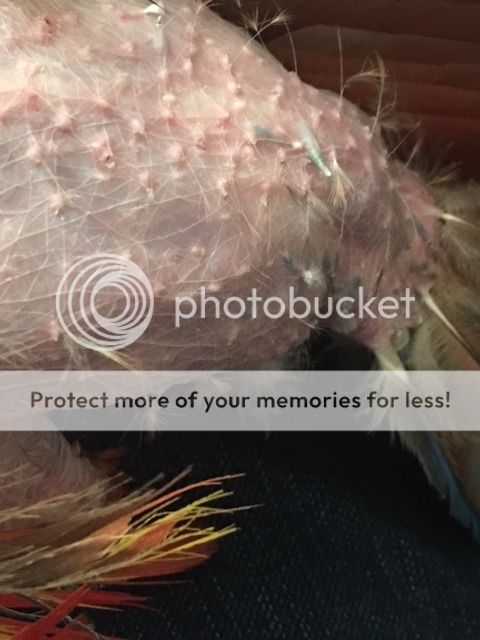BeatriceC
Well-known member
- Feb 9, 2016
- 1,351
- 92
- Parrots
- Goofy (YNA), Oscar (Goffin 'too). Foster bird Betty (RLA). RIP Cookie, 1991-2016 ('tiel), Leo (Sengal), Charlotte (scarlet macaw). Grand-birds: Liam (budgie), Donovan (lovebird), RIP Angelo (budgie)
I've never dealt with a plucker before Charlotte, so I'm flying by the seat of my pants here (with some help from you guys and my vet). She's still plucking some, but not as bad. She does have a fair number of pin feathers coming through, some of which she leaves along, some of which she plucks, but that's not why I'm posting. Yesterday I noticed that she's growing stuff that doesn't look like down or regular feathers. It looks more like hair-like stalks of wheat. Are these a good thing? Do they mean that the follicles are too damaged to grow real feathers? I can't find anything online to tell me what they are, and we don't have an appointment with the vet any time soon, and I'd rather not have to bother him if I don't have to (i.e., somebody here knows what this is).
Here's a picture of what I'm talking about:

Here's a picture of what I'm talking about:

